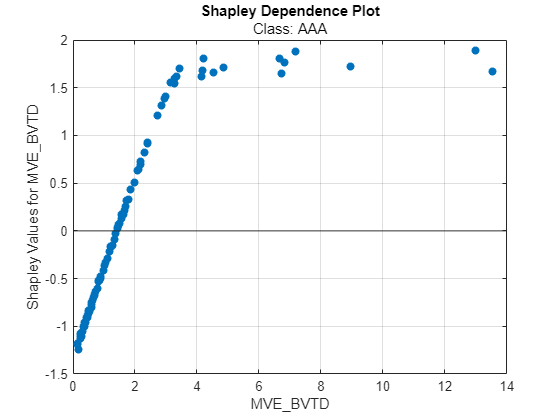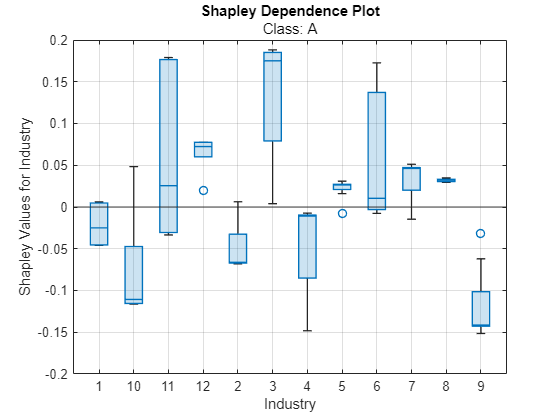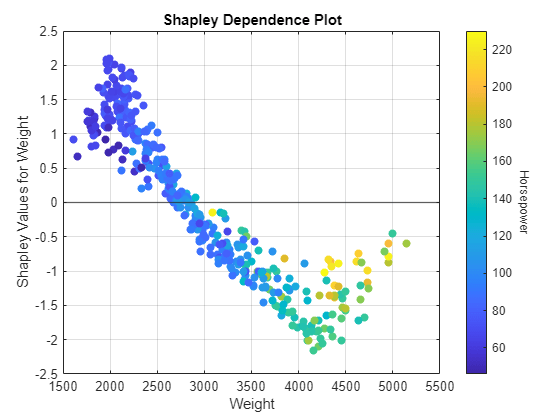plotDependence
Syntax
Description
plotDependence(
returns a dependence plot for the predictor specified by explainer,predictor)predictor and
the Shapley values in the shapley object explainer.
The plot contains Shapley values for the query points in
explainer.QueryPoints.
If
predictorspecifies a categorical predictor (explainer.), then the function displays a box plot of the corresponding Shapley values for each category. Each box plot displays: the median, the lower and upper quartiles, any outliers (computed using the interquartile range), and the minimum and maximum values that are not outliers.CategoricalPredictorsIf
predictorspecifies a noncategorical predictor, then the function displays a scatter plot of the corresponding Shapley values.
If explainer. is a classification model, the function displays a
plot for class BlackboxModelexplainer.BlackboxModel.ClassNames(1) by default.
plotDependence(
specifies additional options using one or more name-value arguments. For example, use color
to display a second predictor in the plot by specifying the
explainer,predictor,Name=Value)ColorPredictor name-value argument.
plotDependence( displays
the dependence plot in the target axes ax,___)ax. Specify
ax as the first argument in any of the previous syntaxes.
p = plotDependence(___)Box or Scatter object. Use p to
query or modify the properties (BoxChart Properties or Scatter Properties) of an object after you
create it.
Examples
Input Arguments
Name-Value Arguments
Output Arguments
More About
Tips
Use
plotDependencewhenexplainercontains Shapley values for many query points.






